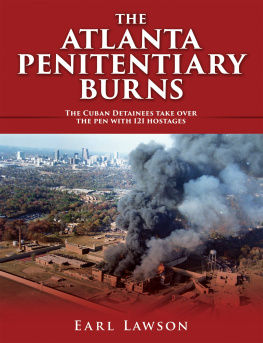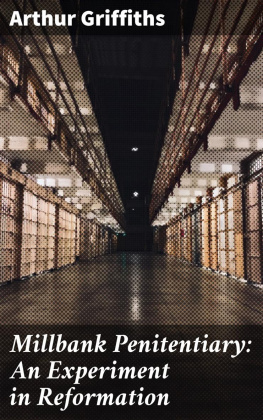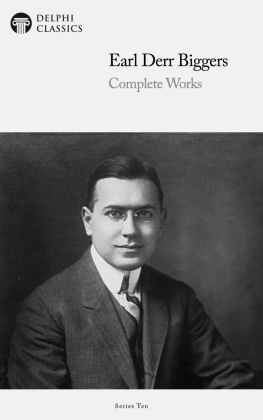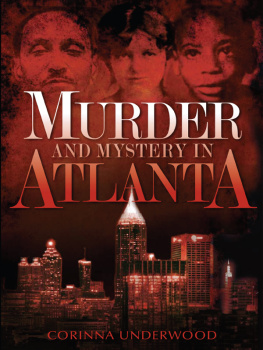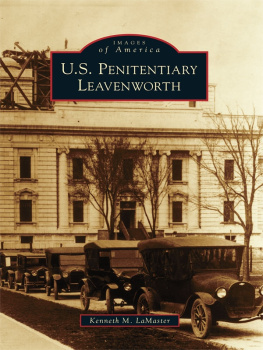Earl Lawson - The Atlanta Penitentiary Burns
Here you can read online Earl Lawson - The Atlanta Penitentiary Burns full text of the book (entire story) in english for free. Download pdf and epub, get meaning, cover and reviews about this ebook. year: 2018, publisher: Xulon Press, genre: Home and family. Description of the work, (preface) as well as reviews are available. Best literature library LitArk.com created for fans of good reading and offers a wide selection of genres:
Romance novel
Science fiction
Adventure
Detective
Science
History
Home and family
Prose
Art
Politics
Computer
Non-fiction
Religion
Business
Children
Humor
Choose a favorite category and find really read worthwhile books. Enjoy immersion in the world of imagination, feel the emotions of the characters or learn something new for yourself, make an fascinating discovery.
- Book:The Atlanta Penitentiary Burns
- Author:
- Publisher:Xulon Press
- Genre:
- Year:2018
- Rating:3 / 5
- Favourites:Add to favourites
- Your mark:
- 60
- 1
- 2
- 3
- 4
- 5
The Atlanta Penitentiary Burns: summary, description and annotation
We offer to read an annotation, description, summary or preface (depends on what the author of the book "The Atlanta Penitentiary Burns" wrote himself). If you haven't found the necessary information about the book — write in the comments, we will try to find it.
The Atlanta Penitentiary Burns — read online for free the complete book (whole text) full work
Below is the text of the book, divided by pages. System saving the place of the last page read, allows you to conveniently read the book "The Atlanta Penitentiary Burns" online for free, without having to search again every time where you left off. Put a bookmark, and you can go to the page where you finished reading at any time.
Font size:
Interval:
Bookmark:

The Atlanta Federal Penitentiary has hundreds of employees, inmates, and detainees. Names of any individuals in the book are only names to assist in identifying the event taking place at the time. Any names that I could identify with a specific event were changed. Any such persons who may have held similar positions in the institution are purely coi ncidental.
WITH MUCH GRATITUDE:
I n 1987 and just after the riot and continuing through several years, I was extremely angry. This anger consumed much of my energy . Anger about the fact that the riot had occurred and was completely preventable. Now the anger and hostility come in spurts, without warning or cause. Over the years I have learned to deflect and control the mood swings, but much of the thanks and appreciation goes to othe r friends.
In an effort to get through the anger, I decided to write this book. I started writing it on a tablet with a pen. As I continued to use this as therapy, a beautiful young mother of two took pity and assisted me. When reading my hand-written transcript become difficult for her, she allowed me to record my manuscript and give her the tapes. She would then type them, print them, and make suggestions where the conversation did not make sense. When the book was completed, she arranged everything into two volumes and bound th em for me.
Without the help of LINDSAY LAYTON, a wonderful member of the church that I attended, the book never would have gone beyond the hand-written, paper stage. I can never thank her enough for the time, patience, and Christian love that she showed me, and without compensation for her efforts. With the continued nightmares and night terrors, I did nothing with the book.
When I finally decided to do something with the book, the original would not hold up for publishing. Again, I found a young lady who, along with her work outside the home, being a mother and housewife, took the time to retype the book for me. Ms. Jessica Browning has taken from herself to help me at a time that I ne eded help.
Without these two young ladies caring for another in need, this book would have never been realized. I want to thank both ladies for the selfless love they have shown me at times when I needed it most. May God add His richest blessings upon eac h of them.
AN IN TRODUCTION
T here is a lot of information, long overdue for public disclosure, about the U.S. Bureau of Prisons and the U.S. Department of Justice (Just us). The staff ultimately pay for many of the irrational decisions made by incompetent officials who are not held accountable for thei r actions.
The information contained in this book is accurate. The majority of the names of employees, inmates, and detainees in the book have been changed. Should I use the name of an actual employee or inmate, that person may have nothing to do with actions in the book. The sequence of events may also be out of order. The book will be divided into three actual sections.
The first section will be prior to 1979, at the U.S. Penitentiary, Atlanta, a maximum security facility for American prisoners.
The second section will cover the period between 1979 and 1981. This is the time in which the facility was in the process of closing. Inmates and staff were being transferred, and the penitentiary closed, are a by area.
Last, and where most emphasis will be, the Cuban period. On November 1, 1984, the Cuban population took over cell house B. On November 23, 1987, they took over the entire facility. Efforts will be made to explain why this occurred and who was re sponsible.
Each of these three separate areas will be broken down into two sections. While they will not be identified as such, hopefully the reader will be able to recognize the relationships between staff (particularly labor-management relations) as well as staff and inmate population relations.
Especially during the period concerning the Cuban population, these relationships will explain how and why twenty-six hostages were held in Oakdale, Louisiana, and, additionally, more than a hundred hostages in Atlanta, Georgia. Only one staff member wa s injured.
The next aspect of the book, which I would like to explain, is the language and sexual discussions. Many of the books and movies of today have used profanity just to fill up space; in some cases, obscenities are designed to add emphasis to an otherwise nonexistent plot. A maximum security correctional facility is a closed community of individuals who are (at least intended to be) placed under a magnifying glass at all timesthis includes their limited sexual life. To remove the conversational style, sexual lifestyle, and attitudes of both staff and the population from the book would result in a Once Upon a Time type of story. Once the conversational styles and attitudes have been established within the first few chapters, the language will no longer appear in the book.
At the time I began this writing, there was a great deal of anger, hostility, depression, and mental confusion about the riot. Those strong emotions followed my being held hostage from November 23, 1987 to December 4, 1987. It is with the help and encouragement of my wife Patti, our family, wonderful friends, and others who continually kept my motivation going. While they did not understand what they were prodding along, nor the rampage they were directing, it is with great appreciation that the offers to help, the inquiries about my progress, and the understanding smiles were received. Thanks to all and to God be the glory.
Part One
CHAPTER 1
WELCOME TO THE US PENITENTIARY, ATLANT A, GEORGIA
I had just moved to the Atlanta area from Columbus, Georgia, when I got a notice from the Atlanta Federal Penitentiary about an interview. As I drove into the circle in front of the gray granite, forbidding-looking structure, I was not only uncertain as to where I should go, but if I wanted to go. The officer in the tower called down through the speaker in the street, asking, Can I help you? When I explained that I was to have an interview for employment, he directed me to the visitors parking lot, which was located just behind me.
After parking, I started walking toward the steps leading into the institution. As I approached a small, glass phone booth-type structure, the officer in the tower again instructed, One moment, please. As I looked into the booth to see who had spoken, a recording began to play. It was a message notifying all visitors to the institution that the introduction of weapons, ammunition, firearms, drugs, or alcohol into a federal correctional facility was illegal and violators would be prosecuted. After listening to the recorded message, I went up the stairs and into the institution. Once inside the front doorway, I found another officer sitting at a desk. When I explained my presence, he informed me that someone would be out to get me shortly. It was obvious that several other men who waited in the lobby were all there for the sa me reason.
It was only a short time until someone from personnel came out for us. We each signed in, were issued a visitors pass, and informed not to wander off on our own. We were to be escorted at all times during this visit. He then instructed the control room officer to open the door into the sally port area and coun ted us in.
The sally port was an open area with electronically controlled doors on three sides and a wall on the other side. It was located in a bottleneck-type area between the administrative building and corridor. As we went in from the front of the institution, we could see between the bars and into the corridor leading into the interior. We could see one officer standing in the front portion of the corridor. He opened both of the doors to the cell houses and, in a moment, the hallway was full of people. One staff member, identified by their keys and radios, stepped out of each of the cell houses and looked down the corridor.
Font size:
Interval:
Bookmark:
Similar books «The Atlanta Penitentiary Burns»
Look at similar books to The Atlanta Penitentiary Burns. We have selected literature similar in name and meaning in the hope of providing readers with more options to find new, interesting, not yet read works.
Discussion, reviews of the book The Atlanta Penitentiary Burns and just readers' own opinions. Leave your comments, write what you think about the work, its meaning or the main characters. Specify what exactly you liked and what you didn't like, and why you think so.

